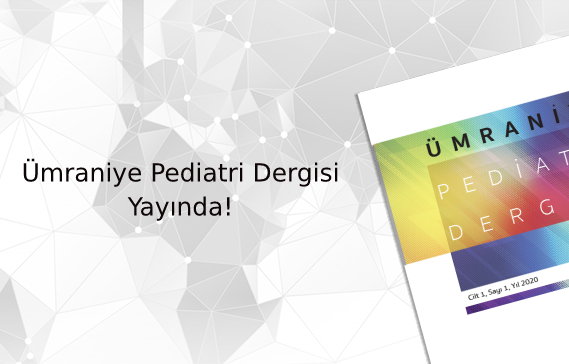2Mardin Eğitim ve Araştırma Hastanesi, Çocuk Gastroenteroloji, Hepatoloji ve Beslenme Kliniği, Mardin, Türkiye
3Mardin Artuklu Üniversitesi Tıp Fakültesi, Çocuk Sağlığı ve Hastalıkları Kliniği, Mardin, Türkiye
Özet
Amaç: Hastanemiz polikliniklerine başvuran çocuk hastalarda idrar yolu enfeksiyon etkenlerinin belirlenmesi, direnç durumlarının değerlendirilmesi ve uygun antibiyotiklerin tespit edilmesidir.
Gereç ve Yöntemler: Mardin Eğitim ve Araştırma Hastanesi’nde 01.05.2021 ile 01.05.2023 tarihleri arasında polikliniğe başvuran ve idrar kültür numunel-erinde üreme saptanan pediatrik yaş grubundaki hastalara ait örnekler, üreme durumu, etkenlere ve antibiyotik duyarlılıklarına göre incelendi. Hastaların dosyaları, hastane otomasyon sistemi üzerinden geriye dönük olarak tarandı.
Bulgular: Yapılan taramada 1843 olguda idrar kültüründe üreme saptandı. İdrar kültürlerinde en sık izole edilen bakteriler sırasıyla; Escherichia coli (%49,7), Klebsiella spp. (%13,4), Koagülaz negatif Staphylococcus (%9,7), Enterococcus spp. (%6,9) olarak belirlendi. E. coli suşlarının %25,2’si ampisiline, %50’si ampisilin/sulbaktama, %52’si seftazidime, %72,4’ü siprofloksasine duyarlı bulundu. E. coli suşlarında en yüksek duyarlılık; kolistin, gentamisin, imipenem, meropenem, nitrofurantoin, tigesiklinde iken en düşük duyarlılık sefazolin, sefuroksim ve ampisilin grubunda gözlemlendi.
Tartışma: Pediatrik yaş grubunda idrar yolu enfeksiyonlarında ilk tercih edilen birinci kuşak sefalosporinler, ampisilin ve ampisilin/sulbaktam yüksek direnç göstermiştir. Düşük direnç nedeniyle ampirik tedavide nitrofurantoin ve aminoglikozidler önerilebilir. Özellikle çocuklarda, antibiyotikler endi-kasyon dahilinde kullanılmalı ve antibiyotik duyarlılık test sonuçlarına göre tedavi yeniden değerlendirilmelidir.
2Department of Pediatric Gastroenterology, Hepatology and Nutrition, Mardin Training and Research Hospital, Mardin, Türkiye
3Department of Pediatrics, Mardin Artuklu University Faculty of Medicine, Mardin, Türkiye
Abstract
Objective: The aim is to identify urinary tract infection agents, assess their resistance profiles, and select suitable antibiot-ics for pediatric patients attending our hospital’s outpatient clinics.
Material and Methods: Samples from pediatric patients who visited the outpatient clinic of Mardin Training and Research Hos-pital between May 1, 2021, and May 1, 2023, and showed growth in urine culture samples, were examined based on growth status, agents, and antibiotic susceptibility. Patient files were retrospectively reviewed through the hospital’s automation system.
Results: Growth in urine cultures was observed in 1843 cases. The bacteria most frequently isolated were Escherichia coli (49.7%), Klebsiella spp. (13.4%), Coagulase-negative Staphylococcus (CNS) (9.7%), and Enterococcus spp. (6.9%). E. coli strains showed sensitivity to ampicillin (25.2%), ampicillin/sulbactam (50%), ceftazidime (52%), and ciprofloxacin (72.4%). The highest sensitivity in E. coli strains was observed for colistin, gentamicin, imipenem, meropenem, nitrofurantoin, and tigecycline, while the lowest was for cefazolin, cefuroxime, and ampicillin.
Conclusion: There was significant resistance to first-generation cephalosporins, ampicillin, and ampicillin/sulbactam, com-monly used as first-line treatments for urinary tract infections in the pediatric population. Nitrofurantoin and aminogly-cosides, which exhibit low resistance, could be considered for empirical therapy. It’s crucial to use antibiotics based on indications, especially in children, and to re-evaluate treatment according to antibiotic susceptibility test results.






 Erkan Sanmak1
Erkan Sanmak1 





